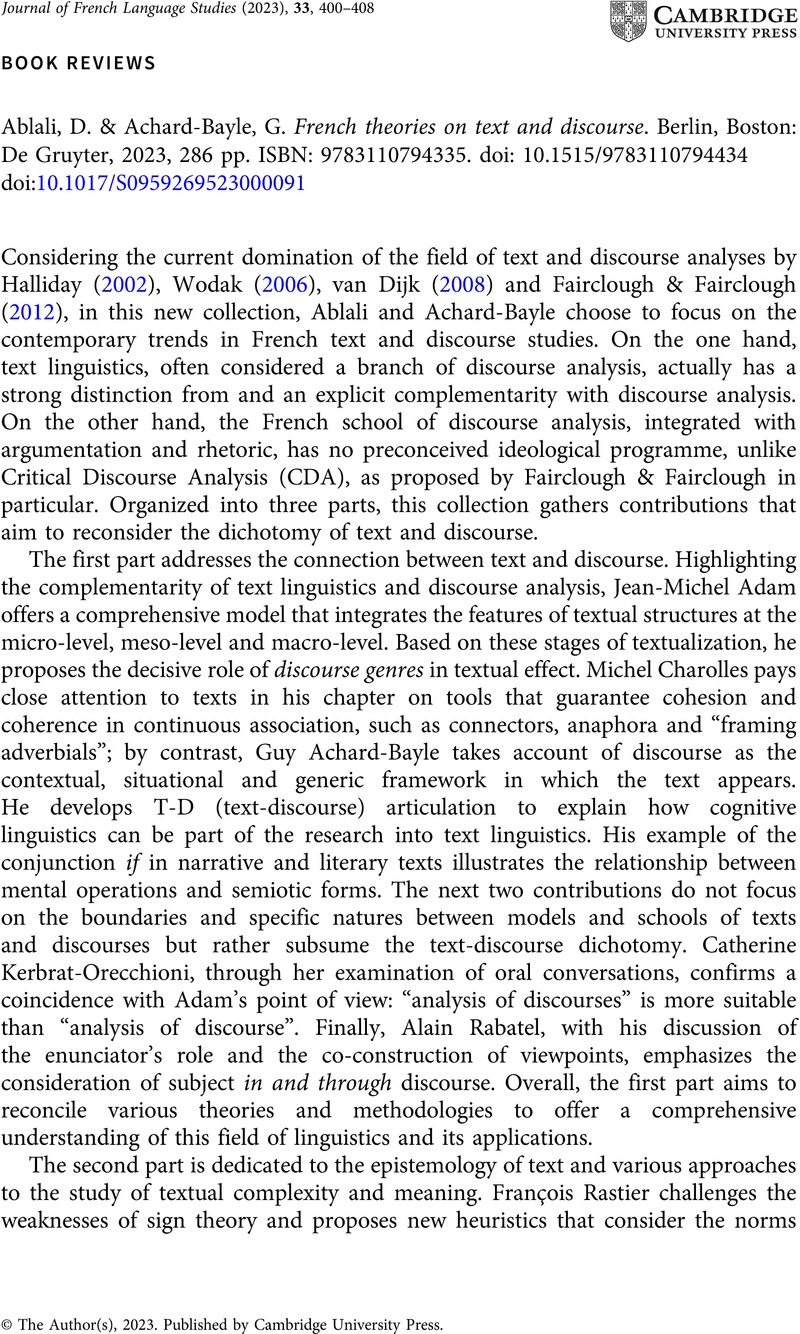No CrossRef data available.
Article contents
D. Ablali & G. Achard-Bayle French theories on text and discourse. Berlin, Boston: De Gruyter, 2023, 286 pp. ISBN: 9783110794335. doi: 10.1515/9783110794434
Review products
D. Ablali & G. Achard-Bayle French theories on text and discourse. Berlin, Boston: De Gruyter, 2023, 286 pp. ISBN: 9783110794335. doi: 10.1515/9783110794434
Published online by Cambridge University Press: 07 June 2023
Abstract
An abstract is not available for this content so a preview has been provided. Please use the Get access link above for information on how to access this content.

- Type
- Book Review
- Information
- Copyright
- © The Author(s), 2023. Published by Cambridge University Press
References
Ablali, D., Achard-Bayle, G., Reboul-Touré, S., and Temmar, M. (2018). Texte et discours en confrontation dans l’espace européen. Lausanne: Peter Lang Verlag.
10.3726/b13384CrossRefGoogle Scholar
Fairclough, I., & Fairclough, N. (2012). Political Discourse Analysis: A Methods for Advanced Students. London: Routledge.
Google Scholar
Halliday, M.A.K. (2002). Linguistic Studies of Text and Discourse, Webster, Jonathan (ed.). New York: Continuum International Publishing.
Google Scholar
Van Dijk, T. A. (2008). Discourse and Power. Contributions to Critical Discourse Studies. Houndsmills: Palgrave MacMillan.
Google Scholar
Wodak, R. (2006). Critical linguistics and critical discourse analysis. In Ostoman, J. and Ver Schueren, J. (eds), Handbook of Pragmatics. Amsterdam: John Benjamins, pp. 50–70.Google Scholar



